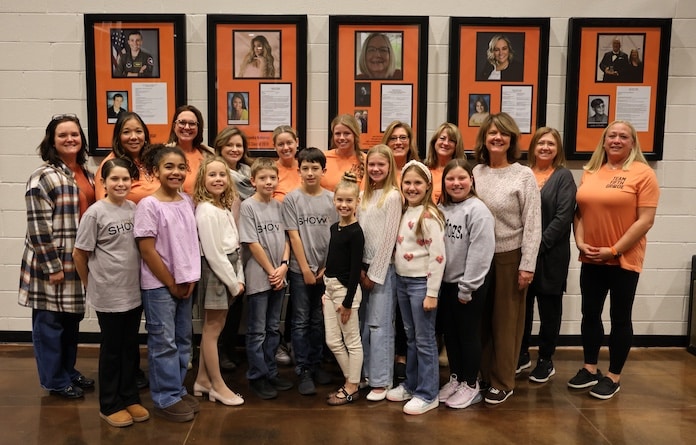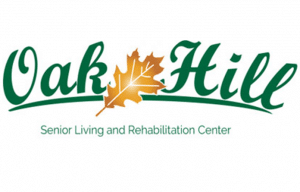Topics galore for Waterloo School Board

The future of Waterloo Junior High School continued to be a major topic of conversation for the Waterloo School Board at its latest monthly meeting held Monday, with discussion also turning to this year’s tax levy along with some allusions to unrest with the high school’s volleyball program.
The board briefly discussed the tax levy for the year, later approving a hearing date set for next month’s board meeting.
Waterloo Superintendent of Schools Brian Charron said the board’s finance committee supported a 9 percent increase over the levy extended last year. The hearing is required by law as this is an increase exceeding 5 percent.
A public notice scheduled to be published in the Dec. 3 issue of the Republic-Times notes the corporate and special purpose property taxes set to be requested for this year total $26,468,060, a 9.02 percent increase from 2024’s amount of $24,250,325.
The property taxes for debt service and public building commission leases will total $5,110,098 – a 5.17 percent increase from $4,859,082 in 2024.
Thus, the total property taxes requested by the school district are set to total $31,548,158 – an increase of 8.38 percent over last year’s $29,109,407.
WJHS talk was led by Charron, who spoke about takeaways from the tours recently hosted at the school and an online community poll that coincided.
Charron noted the tours were not heavily attended, with around a dozen community members present at either. Likewise, only around 20 individuals offered feedback through the survey.
In speaking about the tours, he recalled that a key point discussed was the state of the below-ground areas, namely the locker rooms which face a number of issues including ADA accessibility.
Perhaps the most notable point from Charron’s presentation was his introduction of a third possibility among the previously discussed ideas of renovating the current building or replacing it with a new facility elsewhere in the community.
This third potential plan would involve renovating the newer southern part of the building added in 1956, neglecting the older portion in favor of building an entirely new wing in front of the building.
“One of the options that we would have would be to not spend money on the 1938 building,” Charron said. “I think ultimately that’s how I feel personally and some of the feedback that I think I was getting from people is that everybody understands the 1938 portion of the building – which is the north end – has reached its useful life, but we don’t feel comfortable about abandoning the 1956 portion of the building.”
He spoke to some potential benefits of this, particularly that it would allow for only replacing the part of the HVAC system in the newer building.
Charron additionally pointed out how this would allow for minimal disruption to school activity as the construction would take place on the junior high property while not displacing students as a full renovation would.
He further identified similar projects in both the Waterloo and Columbia school districts which seem to be successful.
“We’re very proud of how Zahnow Elementary turned out,” Charron said. “I’ve not gone to tour or anything, but if you’ve driven by Columbia High School, I think it looks beautiful as you’re driving by there, and they seem very proud of what they’re doing.”
Charron said the addition plan is currently roughly estimated to cost around the same as the renovations, though he asked the board for permission to work with FGM Architects to put together a proper estimate and evaluation of the project in the same way as has been done with the proposed renovation or replacement options.
He additionally noted that this choice, like the choice to replace the school, would ultimately have to be approved by voters whereas the board could simply decide to renovate the current junior high and borrow required funds without voter input.
In speaking about the project’s funding, school board vice president Neil Giffhorn asked about how the funds borrowed for the WJHS project would impact taxes alongside ongoing payments for the construction of Waterloo High School.
Charron said $23-24 million remains on the WHS payments, with the last payment scheduled for the spring of 2031.
He added that roughly $1 million could be saved were the district to pursue refinancing as has been discussed previously.
He further said that the goal in setting up the junior high debt repayments would be keeping the debt structure stable, ensuring the district is levying a similar amount in taxes from year to year as it goes from paying off WHS to paying off WJHS.
The board ultimately indicated approval of Charron pursuing an overview of the new addition option, and it was further noted the board would be seeking additional local input as this third option becomes a real possibility.
“Perhaps it’s overused, and it’s not completely accurate, but in the simplest terms, there are times with your automobile where it becomes more expensive to maintain the old car you have than what buying a new one would be, and perhaps that is where we’re at, that replacing the waterlines, the HVAC system, et cetera, adding an elevator, all those things that we would have to do to that ‘38 portion of the building might be in the same ballpark as rebuilding it right out in front of the junior high,” Charron said.
Though brief, the public participation section of the meeting was rather passionate as three individuals approached the board to speak in support of WHS P.E. teacher and varsity volleyball head coach Angie Crawford.
Additionally, an executive session was called at the end of the regular meeting. It would appear Crawford and her coaching staff were the subject of this executive session as her legal representation and other concerned parties were present.
The exact controversy seemingly surrounding Crawford is currently unknown. When asked, Charron noted he is unable to speak on the matter as it is a personnel issue.
The first individual to speak was Carey Day, who described how she’s been a part of the high school’s volleyball program for years as her daughters have participated.
Day spoke highly of Crawford’s leadership and contributions to the volleyball program, noting how her work has helped build a strong team culture that focuses on positivity.
She further emphasized how Crawford has helped the girls on her team achieve big milestones and break school records.
“Through this volleyball program, under coach Crawford’s leadership, they have learned a lot about being a team player, and their love of the game grew,” Day said. “A lot of good has come from the volleyball program and the current coaching staff. They have demonstrated to me as a spectator and parent the pride they have in their girls, helping the athletes reach their personal goals and celebrating their successes on and off the court.”
Day additionally spoke about what she’s heard from her senior athlete, who’s spoken about how Crawford and the other coaches really listen to the players and look out for them both as athletes and individuals.
Amanda Miller spoke next. Also with a daughter in the WHS volleyball program, she spoke about conversations she’s had with Crawford and how supportive she is to her players.
Miller specifically told about how her daughter was originally planning to not participate in the team due to pressures from school, only to have Crawford help her navigate the year as both a student and athlete.
“Coach could have easily dismissed her because it was not about volleyball or her playing time but more about school workload and pressures of school,” Miller said. “Coach sat and listened, and together, they formed a plan… Without coach’s compassion and care for her student athletes, especially my Claire, she would not have had a volleyball season.”
Lauren Luke was the last to speak. A WHS graduate and former volleyball athlete, Luke said she knows what strong coaching is and spoke in Crawford’s defense as well.
Though not having played under Crawford, she attested to the excellent things she’s heard about the coach and her colleagues, how they’ve built up the volleyball program and each year’s team.
Luke also alluded to some of the apparent controversy surrounding Crawford.
“Removing a coach with her commitment, her experience and her proven track record, especially over the criticism of just a couple individuals, is not only unfair, but it’s harmful for the stability and integrity of the program,” Luke said. “It sends a message that dedication and longevity can just be undone by personal agendas… I’m asking the board to look at the full picture. Look at the impact she has made on hundreds of athletes. Look at the trust she has earned over 15 seasons from these athletes and look at the respect she’s built in the community.”
Regarding action items, the board approved a bid for $535,394 to Total Roofing for a partial roof replacement at Rogers Elementary as well as a contract with PMA for municipal advisor services concerning the aforementioned debt refinancing.
Also approved was a school maintenance project grant application, a memorandum of understanding between the district and Waterloo Association of Service Personnel, and the first reading of Press Plus Issue 120 policies.
The board also approved a “special covenant” amendment to the Career Center of Southern Illinois’ Intergovernmental Agreement Between Participating Districts to permit and authorize an agreement and build-to-suit lease with Southwestern Illinois College for the development and occupancy of a new campus and facility.
A similar item was approved regarding Perandoe Special Education District.
These items, as Charron explained, are essentially meant to gauge support and commitment among districts in the region for the new CCSI and Perandoe facilities set to be built at the SWIC Red Bud campus.
Another highlight of the meeting came as the Waterloo Classroom Teachers’ Association offered their monthly presentation, which chiefly featured a group of Gardner Elementary’s fifth graders speaking about their experiences with the SHOW group, DARE program, Spring Conservation Day and a host of other goings-on at the school.






